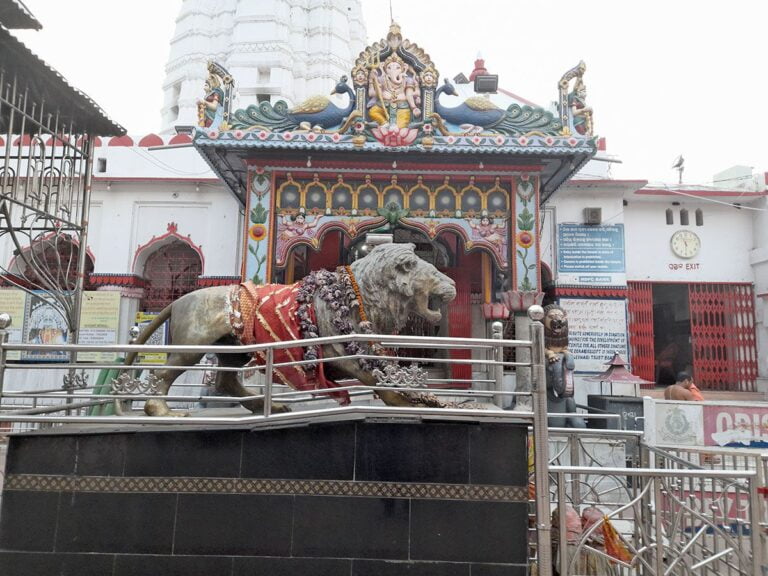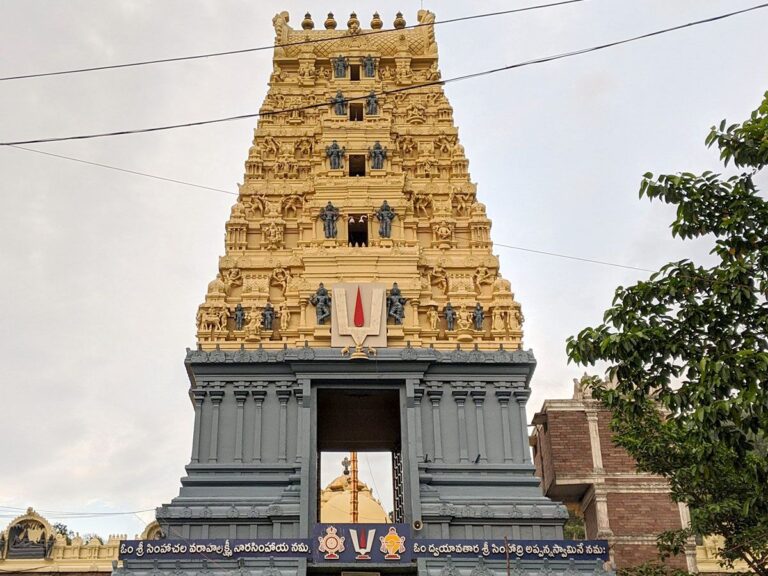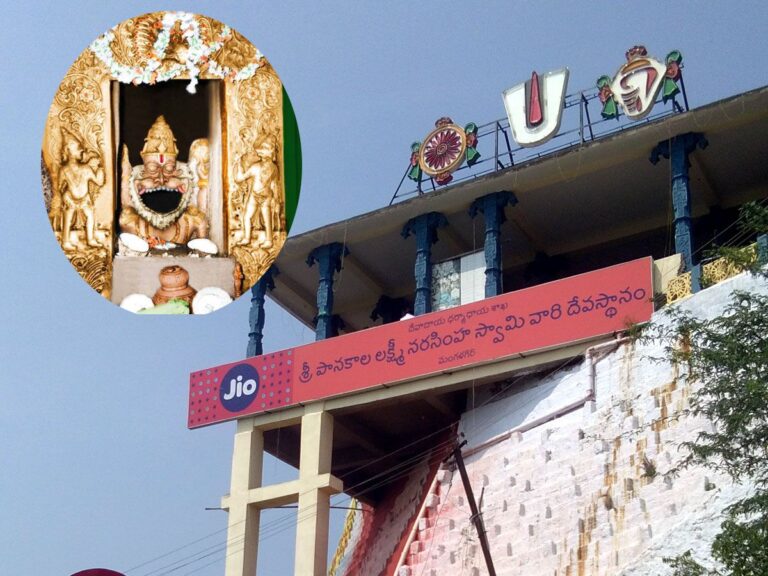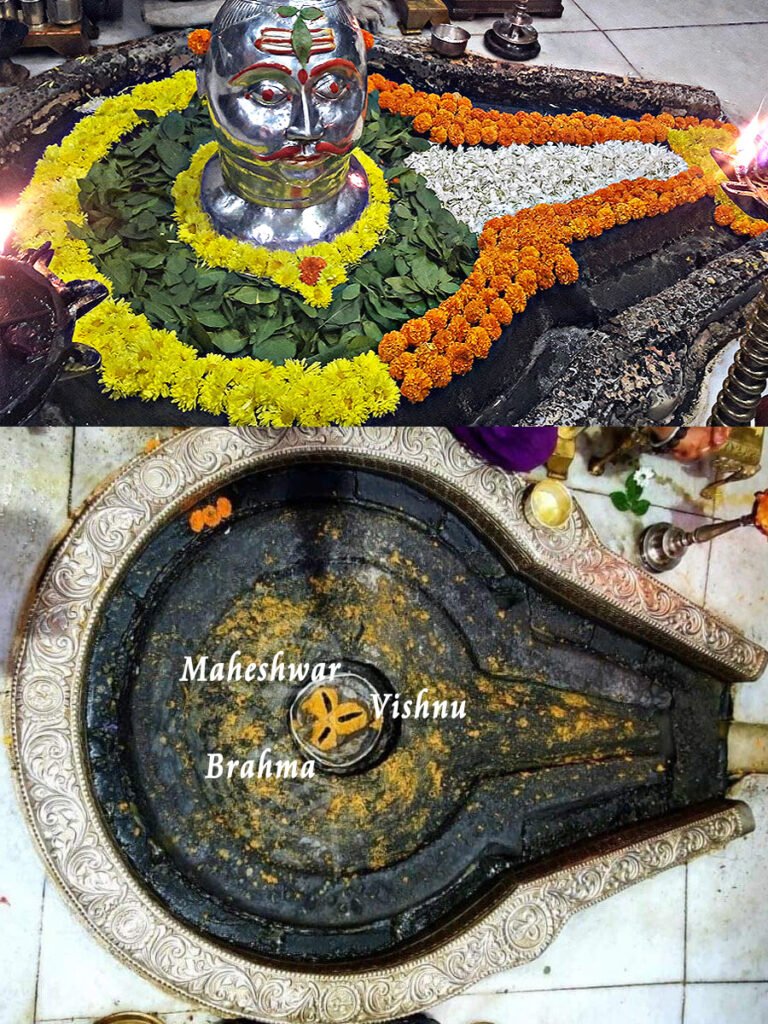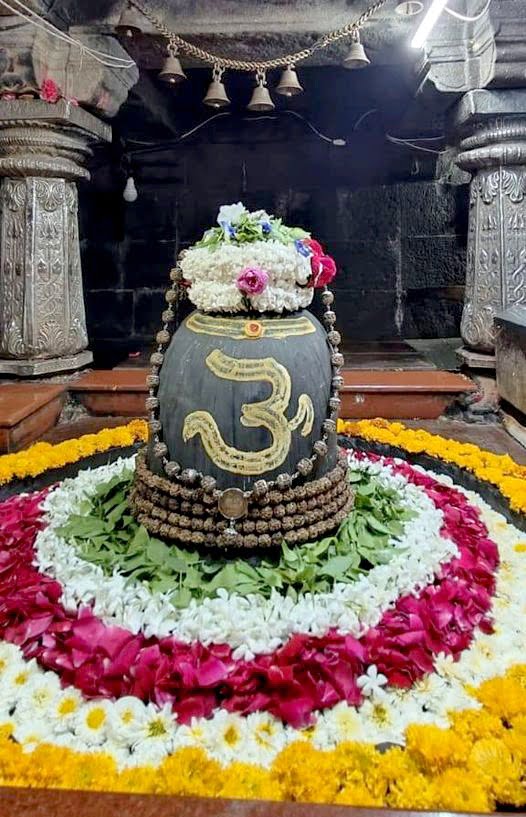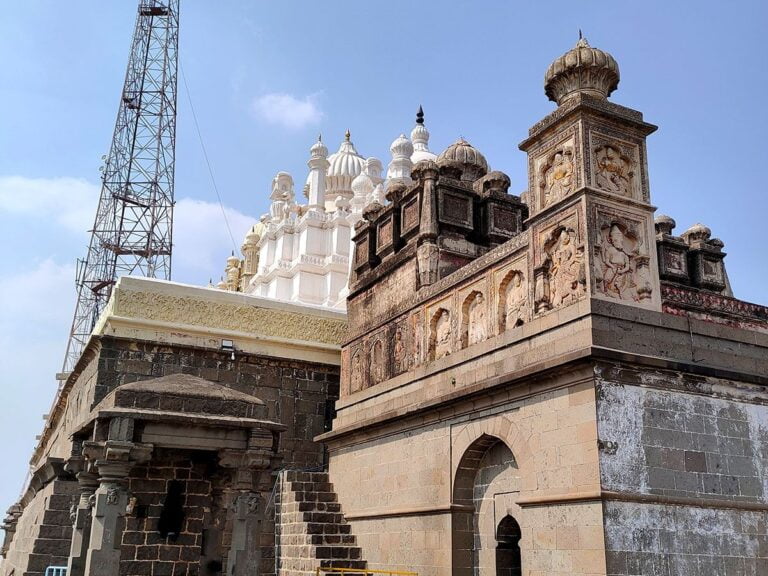Gundicha Temple: Discover Puri’s Divine “Aunt’s House”
Gundicha Temple Puri: I’m so thrilled to share a really special trip with you today. We’re going to see a really beautiful place in Puri, Odisha, India, called the Gundicha Temple. Think about a big house where really special visitors from far and wide stay for a tiny holiday each year! That’s roughly what the Gundicha Temple is like, and it’s packed with fantastic stories and gorgeous traditions.

You may have heard of Puri due to its really famous Jagannath Temple, which is sort of the main residence of Lord Jagannath, his brother Lord Balabhadra, and his sister Devi Subhadra. Okay, Gundicha Temple is sort of their other special residence, their aunt’s residence, to be exact! It’s somewhere they go to relax and play when there is a really big festival called the Rath Yatra. So, let’s unlock our imaginations and enter this engaging world!
Contents
- 1 A Glimpse into the Story: Gundicha Temple History
- 2 The Legend of the Temple: Stories from Ancient Times
- 3 The Significance of the Temple: Why It’s So Important
- 4 Architecture: A Royal Welcome
- 4.0.1 Simhachalam Temple – Varaha Lakshmi Narasimha Swamy
- 4.0.2 Mangalagiri Panakala Narasimha Swamy Temple
- 4.0.3 Vontimitta Temple of Sri Kodanda Rama Swamy
- 4.0.4 Vadapalli Temple of Sri Venkateswara Swamy
- 4.0.5 Arasavalli Temple | Sri Suryanarayana Swamy Temple
- 4.0.6 Powerful Annavaram Temple Sri Veera Venkata Satyanarayana Swamy
- 5 Myths and Beliefs: Enchanting Tales
- 6 Gundicha Temple Timings: When to See Our Divine Visitors
- 6.0.1 Nageshwar Jyotirlinga Dwaraka: 7th CE Temple with Divine Powers
- 6.0.2 Grishneshwar Temple: Wealth and Pleasure at Shiva’s Feet
- 6.0.3 Kedarnath Temple: One of Jyotirling & Char Dham
- 6.0.4 Trimbakeshwar Jyotirlinga Temple
- 6.0.5 Sacred Kashi Vishwanath Temple: 11th Jyotirling of Liberation
- 6.0.6 Aundha Nagnath Temple: 8th Jyothirling with Divine Serpents
- 7 Special Days and Rituals: A Celebration of Devotion
- 8 Crowded Days: A Sea of Devotion
- 8.0.1 Strange Bateshwar Sthan Bhagalpur: Bihar’s Hidden Gupta Kashi
- 8.0.2 Famous Sundarnath Temple Araria Bihar | Sundar Nath Dham
- 8.0.3 Shiv Shakti Temple Bhagalpur Bihar
- 8.0.4 Mangala Gauri Temple Gaya Bihar
- 8.0.5 Is Bhoothnath Mandir Bhagalpur HAUNTED? See For Yourself!
- 8.0.6 Shri Vishnupad Temple Gaya
- 9 Why This Place is Very Special: A Spiritual Recharge
- 9.0.1 Famous Kollur Mookambika Temple: Discover the Unseen Powers
- 9.0.2 Huge Kodandarama Swamy Temple Ejipura is Echo of Ayodhya
- 9.0.3 Sri Bhoga Nandishwara Gudi: Famous 9 Century Nandi’s Abode
- 9.0.4 Nanjundeshwara Temple Mysore | Sri Srikanteshwara Temple
- 9.0.5 Shri Bettada Bhairaveshwara Temple
- 9.0.6 Vittala Temple Hampi
- 10 Places to Visit Near the Temple: See More of Puri
- 10.0.1 Incredible Facts About Siddhivinayak Temple Mumbai You Didn’t Know
- 10.0.2 Shri Hiranyakeshi Temple Amboli: Lord with Golden Hair
- 10.0.3 Harihareshwar Temple | Kalbhairav Yogeshwari Temple
- 10.0.4 Kondeshwar Temple Pune
- 10.0.5 Mahalakshmi Temple Kolhapur | Ambabai Temple
- 10.0.6 Bhuleshwar Temple: 8 CE Shiva Abode in Islamic Garb
- 11 How to Reach the Temple: Your Journey to Devotion
A Glimpse into the Story: Gundicha Temple History
The Gundicha Temple has a very ancient and fascinating history. It’s not an edifice; it’s a structure that has had many, many years pass by with its own tradition of worship of countless individuals. Picture a time so long ago, when the kings and queens used to rule the kingdom. This temple, where the beautiful stone walls touch the sky, has stood firm through all those centuries.
Although the very year it was constructed is not very clear, most people are of the view that it was constructed by King Indradyumna. You know, the same King Indradyumna who constructed the grand main Jagannath Temple! It’s said he constructed the Gundicha Temple as a lovely garden house or a summer cottage for Lord Jagannath. Isn’t that nice? Can you imagine constructing a comfortable holiday home for your dearest gods?
Throughout the centuries, Gundicha Temple has remained a silent observer to history unfolding before its eyes. It has witnessed countless changes and celebrations, but always retaining its special place in the heart of devotees. It’s such an old diary, keeping all its secrets and tales silently. For most of the year, it lies still like an awaiting home for its loving family to come back. But when Rath Yatra time arrives, it comes alive and becomes a humming beehive of joy and prayers. It’s as if the temple itself is eagerly awaiting its special visitors!
Read More>> Umananda Temple: A Hidden Gem on Brahmaputra River Island
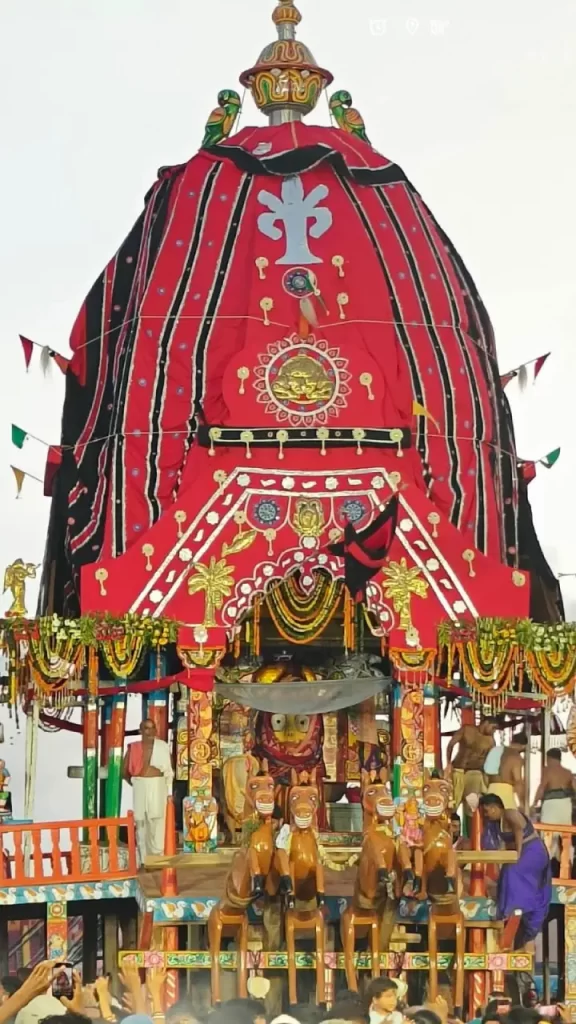
The Legend of the Temple: Stories from Ancient Times
Now let’s get to some really magical tales that explain to us why the Gundicha Temple is so special. These are not ordinary stories; they are grandparent-to-grandchild stories that have been told for a really, really long time!
One of the most well-known legends is that the temple has its name after Queen Gundicha. She was the wife of King Indradyumna, and she was an extremely, extremely devoted devotee of Lord Jagannath. She loved the Lord so much that she wanted to have a special house where the deities would come and relax.
And lo and behold! Lord Jagannath, moved by her untainted devotion, promised her that He, along with his brother Balabhadra and sister Subhadra, would visit her home every year! So, each year, during the Rath Yatra, when you watch the massive chariots moving, it’s as if Lord Jagannath is fulfilling his vow to Queen Gundicha, visiting her house for a sweet trip. Isn’t that a nice vow?
Another interesting belief is that the Gundicha Temple itself is the birthplace of Lord Jagannath, Lord Balabhadra, and Devi Subhadra, and even Lord Sudarshan! All these four are referred to as “Chaturddha Murty.” Think of it, a temple as the origin of such divine souls! This temple becomes even more religious and unique. One thinks that by going to this temple, particularly the Rath Yatra, you can sense an extremely strong feeling of being close to the start of their divine life.
There is also a nice and funny story concerning Goddess Lakshmi, wife of Lord Jagannath. When Lord Jagannath, during Rath Yatra, proceeds to Gundicha Temple, he leaves Goddess Lakshmi alone in the main temple. Can you think of how she would feel? A little bit sad and maybe a wee bit annoyed! So, on the fifth day of the Rath Yatra, which is known as Hera Panchami, Goddess Lakshmi travels all the way to the Gundicha Temple to remind her husband playfully to return home! It’s such a sweet and human-like narrative that reiterates even gods indulge in their fun family moments!
These stories make the Gundicha Temple more than just a building; they make it a place filled with love, devotion, and a little bit of divine playfulness.
The Significance of the Temple: Why It’s So Important
You might be wondering, why is this Gundicha Temple so very important? Well, it holds a very special place in the hearts of millions of people for many reasons.
Above all, it’s the destination for the world-famous Rath Yatra. It’s not any ordinary trip; it’s a massive procession in which thousands and thousands of devotees gather to drag the massive chariots of Lord Jagannath and his brothers out from the central Jagannath Temple to the Gundicha Temple. The trip is held to be extremely sacred. It is believed that merely by looking at the gods on their chariots on this journey, or even by assisting in pulling the ropes, all your troubles and problems can be washed away and you can be blessed immensely. The Skanda Purana, which is one of the ancient Hindu scriptures, writes:
“Ratha tu Vamanam drustva purnarjanma na vidyate.”
(One who sees the divine chariot of Lord Vishnu is liberated from the cycle of rebirth.)
This ancient text informs us just how powerful it is to see this divine procession. It amounts to this: watching Lord Jagannath on His chariot can bring you a very lofty spiritual achievement!
During the seven days (or really nine days when you include the beginning and ending days) that the gods remain at the Gundicha Temple, it becomes a site of tremendous spiritual energy. It’s as if a major spiritual party! Individuals travel from all corners of the globe merely to catch a glimpse of their much-loved Lord Jagannath here. It’s also significant in that, unlike at the central Jagannath Temple where certain tourists (particularly foreigners) are excluded, the Gundicha Temple welcomes one and all during the Rath Yatra time. This makes it one of immense joy and inclusiveness for all followers.
Another profound significance of Rath Yatra and the Lord’s tour to the Gundicha Temple is that it represents Lord Jagannath coming out from his majestic abode to be with his devotees, particularly those who may not be in a position to go see him in the main temple. It is as if the Lord himself comes out to greet everybody, demonstrating his infinite love and grace. This pilgrimage is also believed to be a spiritual purification and a pilgrimage of the soul toward enlightenment.
Participating in this festival makes devotees feel they are moving closer to comprehending divine love and attaining happiness forever. Therefore, the Gundicha Temple is more than a structure; it’s an icon of hope, dedication, and divine love.
Read More>> Famous Mehandipur Balaji Temple: Unveiling the Miracles of Hanuman
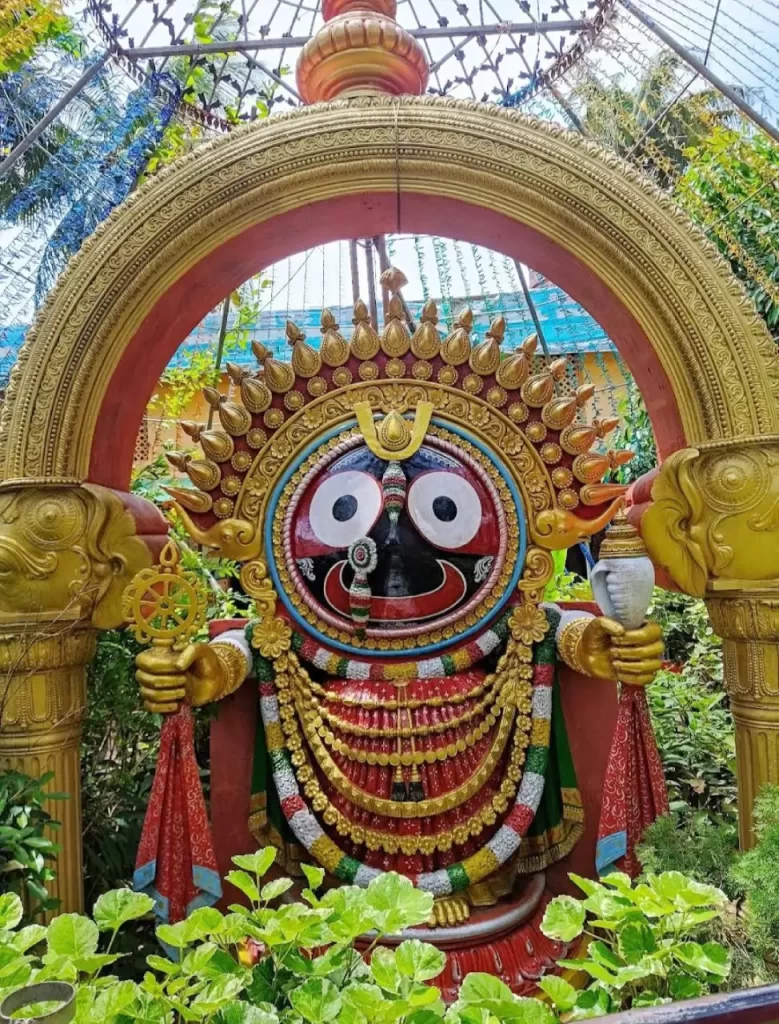
Architecture: A Royal Welcome
Now, let’s discuss how the Gundicha Temple appears! Imagine a lovely palace made from light grey stones. That’s the appearance of the Gundicha Temple. It’s constructed in a very unique manner named the Kalinga temple architecture style. This style is extremely common in Odisha, and it makes temples appear majestic and grand, almost like a crown touching the sky.
The temple complex has strong walls around it, and within lies a beautiful garden. That’s why it’s also known as the “Garden House of Jagannath” or “God’s Summer Garden Retreat.” Visualize lovely trees such as coconut, mango, neem, and even lovely-scented flowers like jasmine and rose blooming around the temple. It’s a very serene and peaceful location, just right for a divine holiday!
The Gundicha Temple consists of four primary sections, such as various rooms in a large house:
Vimana: This is the central section, such as the special room where gods reside. It has a high, tower-shaped roof.
Jagamohana: This is the hall of assembly, where individuals can gather and pray.
Nata Mandapa: This is the hall of festivity, where dance and music are performed at times of celebration.
Bhoga Mandapa: This is the offering hall, where tasty food is cooked and presented to the gods.
Within the innermost sanctum (Vimana), there’s a simple, elevated platform made of a particular green-colored stone known as chlorite. It is referred to as the Ratnavedi, and it’s where the statues of Lord Jagannath, Balabhadra, and Subhadra are put during their visits during the Rath Yatra. It’s their private throne!
The temple also has two prominent gates. The Western Gate is similar to the main gate, whereby the gods come in whenever they drive in on their chariots. The Eastern Gate, referred to as the Nakachana Gate, is utilized whenever the gods exit the temple heading back to the central Jagannath Temple.
Although the Gundicha Temple may not be as massive as the central Jagannath Temple, its architecture is also very unique and reveals a lot about Odisha’s rich history and art. It’s a temple constructed with much love and affection, eager to receive its divine guests every year.
Myths and Beliefs: Enchanting Tales
The Gundicha Temple has numerous interesting myths and legends surrounding it, so it is a site where religion and folklore mingle. They give an extra layer of wonder and magic to the life of the temple.
One of the beliefs is related to the actual origin of the gods themselves. It is argued that the divine craftsman, Vishwakarma, was chiseling the idols of Lord Jagannath, Balabhadra, and Subhadra. He made a condition: nobody was to come near him when he was working. But Queen Gundicha, so impatient to have a glance at the idols, could not hold back and opened the door prematurely! Thus, the idols were incomplete, lacking hands and feet. However, it is said that the unfinished forms are flawlessly divine and have a special turn of the Lord about them. The Gundicha Temple is at times associated with this event, representing the first stage of their divine realization.
Yet another endearing myth is that of Lord Jagannath’s close relationship with Queen Gundicha. Traditions even go so far as to regard Queen Gundicha as being Lord Jagannath’s aunt or “Mausi Maa.” This accounts for why the Lord calls on her residence each year during the Rath Yatra – it’s just a family visit! This one relationship in particular serves to illustrate the very mortal-like nature and love that is bestowed upon the gods and goddesses, making them more relatable to us.
There is also a perception that Gundicha Temple possesses some sort of extraordinary power to heal diseases, specifically diseases such as smallpox. In ancient times, when smallpox and other such epidemics were prevalent, the masses used to offer prayers to “Gundicha” (at times regarded as a local goddess such as Durga or an incarnation of the Divine Mother) to cure their maladies. “Gundi” is a word in Odia meaning smallpox, associating the temple with such healing again. This belief indicates the immense faith individuals have in the divine energy that is linked with this divine place.
These myths and beliefs are not mere ancient tales; they are an integral part of the living tradition of the Gundicha Temple, influencing the way individuals perceive and engage with this sacred site. They remind us that belief very often goes with magical stories that appeal to our imagination and hearts.
Read More>> 5000 Years Old Mystery of Guruvayur Temple Kerala

Gundicha Temple Timings: When to See Our Divine Visitors
So, you wonder when you can go visit the Gundicha Temple? Well, this is a very valid question, because unlike most temples that are crowded throughout the year, the Gundicha Temple is a little different!
For the greater part of a year, the Gundicha Temple is really peaceful and serene. It stands vacant, waiting eagerly for its special visitors. It’s like a stunning home that’s kept in preparation for a major yearly occasion.
But the magic is really achieved on the occasion of Rath Yatra festival. This is when Lord Jagannath, Lord Balabhadra, and Devi Subhadra visit here to reside for seven lovely days. The temple is full of life, prayer, and devotion during these days.
Though the principal Jagannath Temple follows fixed daily hours for darshan (viewing of the deities), the Gundicha Temple’s busiest period is these seven days of the Rath Yatra. If you are here at other times than during this festival season, you may still see the exquisite architecture of the temple and enjoy its serene atmosphere but the deities will not be present.
Typically, when it is open to the public (which is primarily during the Rath Yatra and for architectural observation for the rest of the year), the Gundicha Temple is open from roughly 6:00 AM to 9:00 PM, with an afternoon break, typically from 3:00 PM to 4:00 PM.
Essential Tip for Travelers: If you are specifically going to visit to witness Lord Jagannath and his brothers at the Gundicha Temple, you need to time your visit for the annual Rath Yatra festival. This festival typically takes place during the Hindu month of Ashadha (occurring in June or July). The temple is filled with an amazing crowd of devotees during this time, so be prepared for a very real experience! It’s when the Gundicha Temple really comes alive!
Special Days and Rituals: A Celebration of Devotion
The Gundicha Temple really comes to life during the Rath Yatra festival, which is the holiest period of the year for this temple. It’s a nine-day spectacular celebration, and the Gundicha Temple is right at its center!
Here are some of the special days and rituals that occur here:
Gundicha Marjana (Temple Cleansing): One day before Rath Yatra starts, the Gundicha Temple is given a very special cleansing ritual. It’s like scrubbing your house to perfection before dignified guests arrive! All the priests and devotees join hands and sweep every inch of the temple so that it is spotless and ready for the Lords. This is an extremely symbolic ceremony, demonstrating the cleansing of the heart and mind before receiving the divine.
Rath Yatra (The Chariot Festival – Day 1 of the stay): This is the most awaited day! The huge, ornately decorated chariots convey Lord Jagannath, Balabhadra, and Subhadra from the main Jagannath Temple right up to the Gundicha Temple. It’s a distance of around 3 kilometers along the Bada Danda (the Grand Avenue). The gods spend the first evening on their chariots in front of the Gundicha Temple, and on the second day of the festival, they ritually enter the home of their aunt.
Hera Panchami (Day 5 of stay): Recall the fun story of Goddess Lakshmi visiting Lord Jagannath? This is the day when it occurs! On the fifth day of the stay at the Gundicha Temple, Goddess Lakshmi, in the form of a stunning idol, arrives in a magnificent procession to the Gundicha Temple. She arrives to search for her husband, Lord Jagannath, who went to the home of his aunt without informing her! It is a sweet ritual that demonstrates the celestial relationship and love teasing between them.
Dakshina Moda (Post Hera Panchami): Post Hera Panchami, there’s a significant ritual known as Dakshina Moda. This is when the gigantic chariots are reversed to face the central Jagannath Temple. It’s an indication that the return journey (Bahuda Yatra) is approaching!
Sandhya Darshan (Evening Darshan): For the time the deities spend at the Gundicha Temple, evening darshan, or Sandhya Darshan, is said to be very auspicious. It is believed by many that one darshan at the Gundicha Temple is as good as watching the deities in the main temple for countless, countless years and more!
Bahuda Yatra (The Return Journey): After seven days of relaxation and fun at the Gundicha Temple, the deities return to the main Jagannath Temple. Again, this is a big procession, just as large and thrilling as the first one!
Suna Besha (Golden Attire): On Bahuda Yatra’s next day, prior to the return to the main temple, the gods are dressed in resplendent golden jewels straight onto their chariots before the main temple! It’s a scintillating view known as Suna Besha, where the Lords simply shine in gold.
These ceremonies and festivities turn the Gundicha Temple into a thriving hub of religion and celebration, particularly during the Rath Yatra. It’s a time when millions of hearts are filled with devotion and happiness.
Read More>> Shree Lairaee Temple Goa | Shri Lairai Devi
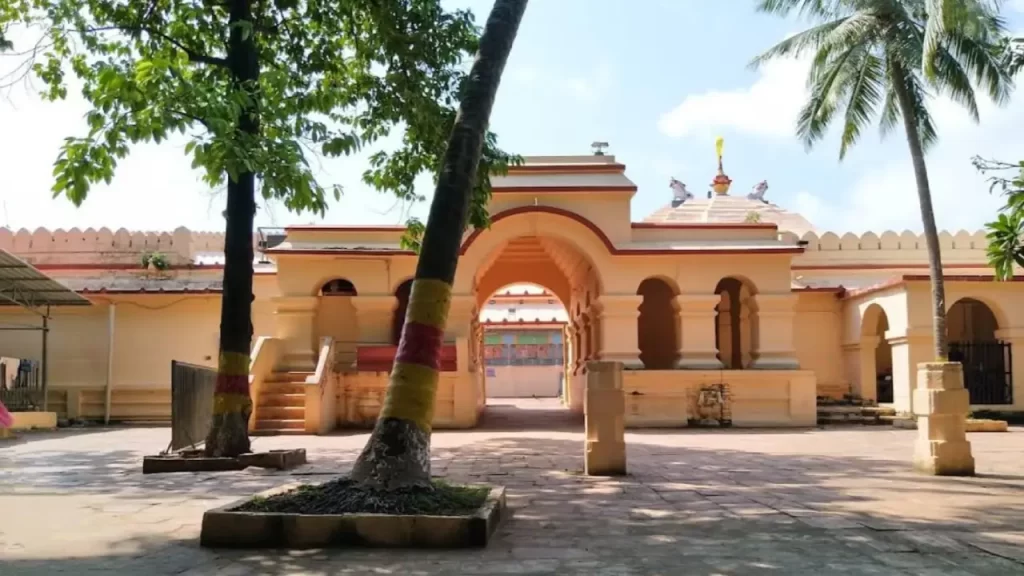
Crowded Days: A Sea of Devotion
As you might expect, with all these special ceremonies and the high significance of the Gundicha Temple during the Rath Yatra, it gets awfully crowded!
The busiest days are certainly:
The Rath Yatra day itself (when the deities arrive): Thousands and thousands of people converge on the Grand Avenue (Bada Danda) to pull the chariots and see the Lords. The Gundicha Temple area is completely jammed.
Hera Panchami (when Goddess Lakshmi visits): This too is a very crowded day as the devotees wait impatiently for Goddess Lakshmi’s mischievous visit.
Sandhya Darshan days: While the deities are here, particularly in the evening, a lot of people take that special darshan.
Bahuda Yatra (the return journey): Similar to the coming, the return too attracts a huge crowd since everyone wishes to see the Lords return to their principal home.
If you’re going to go during these periods, prepare yourself for a full-on experience! It’s a sea of people, all flowing with a common goal: worshiping Lord Jagannath. Patience, hydration, and having your loved ones near is best. The energy is palpable, with people chanting “Jai Jagannath!” and the ringing of gongs and trumpets. It’s an experience you won’t soon forget, that of sheer communal faith.
Why This Place is Very Special: A Spiritual Recharge
We’ve discussed its past, legends, and stunning architecture, but why is the Gundicha Temple really special? It’s not just a place to visit; it’s a site of great spiritual importance.
Think of it this way: the principal Jagannath Temple is like the Lord’s permanent residence, where he carries out his daily activities. But Gundicha Temple is his yearly holiday destination, a resort of rest and rejuvenation. It is believed that during their sojourn here the deities enter a phase of “rest” and “rejuvenation” after the grand bathing ceremony (Snana Purnima) in which it is said that they fall sick. Their sojourn at Gundicha Temple is similar to a convalescent period, in which they gain their strength and divine energy.
This temple also symbolizes a deep integration between the deity and the devotees. When Lord Jagannath steps out of his central temple and goes to the Gundicha Temple, it signifies how accessible he is to everyone. It implies that whoever you are and wherever you belong, the Lord emerges to greet you. This notion of the Lord visiting the people, as opposed to people going to the Lord all the time, is a strong message of universal love and divine compassion.
There are no special poojas that are routinely done only in the Gundicha Temple that are not also done in the main temple. However, the entire stay of the deities here during the Rath Yatra is itself considered a grand, continuous pooja and a period of intense spiritual activity. Devotees offer prayers, sing bhajans (devotional songs), and seek blessings throughout their stay. The air is filled with spiritual energy, making every moment spent here a form of worship.
So, the Gundicha Temple isn’t only somewhere to go; it’s a spiritual experience. It’s where you can sense the heartbeat of devotion, see ancient customs, and come into contact with the divine in a very special and intimate fashion. It’s a reminder that even the divine requires a change of scene and likes visiting its loved ones!
Places to Visit Near the Temple: See More of Puri
Puri is a spiritually beautiful city, and once you’ve been at the magic of the Gundicha Temple, there are numerous other beautiful Hindu sites around where you and your family can have a joyous time! It’s almost like a divine treasure hunt.
Shree Jagannath Temple (The Main Temple): Absolutely a must-see! Almost 3 kilometers from Gundicha Temple, the principal residence of Lord Jagannath, Lord Balabhadra, and Devi Subhadra. It’s an old and impressive temple, being one of the four Char Dham pilgrims in India. You will be surprised by its enormity and detailed carvings. Keep in mind that foreigners typically cannot go inside the principal temple, but you can at least appreciate its magnificence from the outside and sense its religiosity.
Puri Beach & Swargadwar Beach: Although not really a temple, the Puri Beach is held in extremely sacred regard. Bathing in the Bay of Bengal here is thought to wash away one’s sins. Swargadwar means literally “Gateway to Heaven,” and it’s a very significant cremation site for Hindus but also a favorite among devotees for a sacred bath. You can unwind, sense the ocean air, and introspect on your spiritual journey. On festivals, you may even witness marvellous sand art illustrating the tales of Lord Jagannath!
Mausi Maa Temple: This tiny temple is also quite important during Rath Yatra. When the chariots are coming back from the Gundicha Temple to the central temple, they make a halt at the Mausi Maa Temple. Here, the Lords are given a special cake known as Poda Pitha. It’s a sweet morsel for the Lords on their way back home!
Alarnatha Temple (in Brahmagiri): This temple, which is around 23 kilometers from Puri, becomes a most significant pilgrimage destination during the Anavasara time. This is the 15-day duration prior to Rath Yatra when the gods in the main Jagannath Temple are believed to become “unwell” after their ceremonial bathing and are placed in seclusion. During this period, pilgrims go to Alarnatha Temple to have the darshan of Lord Alarnatha, a manifestation of Lord Jagannath while he was recovering.
Lokanath Temple: It is a very old temple dedicated to Lord Shiva. It is yet another very significant religious place in Puri. According to belief, Lord Rama himself installed the Shiva Lingam here.
Visiting these locations will provide you with a greater appreciation for Puri’s spiritual wealth and the devotion that fills every nook of this sacred city.
How to Reach the Temple: Your Journey to Devotion
Reaching the Gundicha Temple is rather simple, given that Puri is an extremely well-connected city. Here’s how you can make your way, whether you’re coming from afar or just from nearby:
By Air (Aeroplane): The closest airport to Puri is the Biju Patnaik International Airport in Bhubaneswar (BBI). Bhubaneswar is the capital of Odisha and is located approximately 60 kilometers (1.5 hours’ drive) from Puri. From the airport, you can hire a taxi, a pre-paid taxi, or board a bus directly to Puri.
By Rail (Train): Puri has a railway station of its own, the Puri Railway Station (PURI). The station is well-linked to other large cities in India such as Kolkata, New Delhi, Chennai, and Mumbai. It’s an easy choice for a lot of people. From Puri Railway Station, the Gundicha Temple is approximately 4 kilometers away. Auto-rickshaws, cycle-rickshaws, or taxis are easily available just outside the station to reach you directly to the temple.
By Road (Car/Bus): Puri is highly accessible by good roads to major cities and towns of Odisha and adjacent states.
From Bhubaneswar: Frequent government and private bus services are available between Puri and Bhubaneswar. The travel time is around 1.5 to 2 hours. You can also take a taxi for a comfortable trip.
From other cities: If you’re traveling from cities such as Cuttack, Konark, or elsewhere in Odisha, you’ll be able to get direct bus services or can simply drive your own vehicle or take a taxi.
Once you are at Puri, the Gundicha Temple is on one end of the Bada Danda (Grand Avenue), which is the prime road joining it with the Jagannath Temple. It’s really not hard to find, particularly during the Rath Yatra when the whole place is filled with activity. Local auto-rickshaws and cycle-rickshaws are easily available for local short distances around Puri.
Still not satisfied with this article? Please feel free to visit the Wikipedia link.






